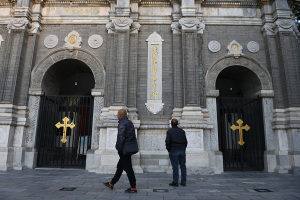PAZ and Starlink Satellites Up and Running After SpaceX's Successful Falcon 9 Launch
After being delayed three times, SpaceX finally launched its Falcon 9 rocket carrying the PAZ and Starlink satellites into space. The PAZ radar-imaging satellite and SpaceX's internet broadband satellites are now up and running.
SpaceX launched the Falcon 9 rocket carrying the payloads on Feb. 22 to the low-Earth from the Vandenberg Air Force Base in the state of California. The PAZ radar-imaging satellite of the Spanish company HisdeSAT is now able to capture over 100 images "up to 25 cm resolution." According to HisdeSAT, the "radar technology satellite designed to address not only security and defence requirements, but also others of civilian nature."
The successful launch of the PAZ mission is not the only achievement SpaceX is celebrating about. The first Starlink prototypes made it through as part of SpaceX's campaign to provide cost-effective internet connection for the globe. "First two Starlink demo satellites, called Tintin A & B, deployed communicating to Earth stations," SpaceX boss Elon Musk tweeted. Musk's tweet is accompanied by a short video clip of the satellites detaching from the rocket.
Musk then poked fun on Twitter about the recently deployed internet deployed satellites. "Tintin A & B will attempt to beam 'hello world' in about 22 hours when they pass near LA," Musk tweeted last Thursday. He then followed that up with, "Don't tell anyone, but the wifi password is 'martians,'" and then "That was a DM, right?"
After the launch, SpaceX finally managed to recover half of its intact Falcon rocket payload according to Teslarati. This marks the company's first recovery fairing mission. Teslarati's photo of the recovered fairing shows the other half in great condition despite its journey.
People from all over the globe are now waiting for further updates on SpaceX's next step for the Starlink satellites. So far, 2108 has been a productive one for SpaceX with successful launches like the Govsat-1, PAZ, and most of all, the ciritcal initial test for the Falcon Heavy.




























